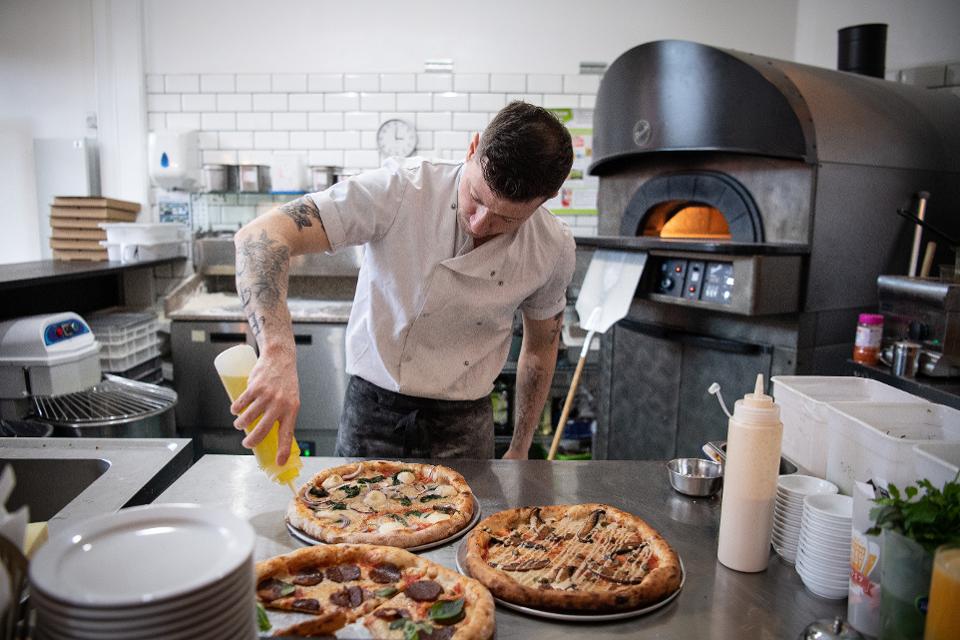A virtual food court delivered straight to your door. A fresh take on new restaurants. A chance for customers to have control over their dining. Ghost kitchens are popping up around the country and changing the way restaurants operate and customers dine. The shifting tide matches the growing trend of experiential retail and signals potential changes that could impact other industries.
1.What Are Ghost Kitchens?
Think of it as a co-working space for food or a restaurant without a storefront. Also known as virtual kitchens, ghost kitchens strip down the traditional dining establishment by removing dining areas and fancy décor. Instead, they serve as large kitchens for restaurants to prepare food to deliver to customers. Numerous restaurants can operate out of the same ghost kitchen, either working from the same facility or breaking the space into separate areas. DoorDash recently launched a shared ghost kitchen with four diverse restaurants using the same space. Customers can order from any combination of the restaurants in the same order and have it delivered all at once. DoorDash Kitchens introduce restaurants to new customers without having to open an entire dining area. A number of other large companies operate shared spaces for numerous restaurants.
Other restaurants prefer to host their own virtual kitchens and use third-party delivery companies to streamline logistics. In Denver, high-scale restaurant Blue Island Oyster Bar created a sub-brand for the millennial delivery crowd. Denver Lobster Shop operates out of the same kitchen without an actual dining area. The move allows the main restaurant to reach an entirely new group of customers looking for quality seafood delivered with a lower price tag.
The benefits of a ghost kitchen are numerous for dining companies. For one, restaurants can drastically cut their operating costs by having fewer employees and less square footage. Without having to wash serving dishes or set tables, the companies can streamline operations, innovate and focus on creating quality menu items. Ghost kitchens also provide opportunities for newer restaurants trying to make it in the notoriously risky industry. The initial investment to operate in a ghost kitchen is much smaller than opening a full dine-in restaurant, which could allow more restaurants to take the plunge.
2.Building A Better Dining Experience
But ghost kitchens don’t just benefit the restaurants themselves. They are also becoming increasingly popular with customers. Consider the growth of food delivery services like Uber Eats, Grubhub and Postmates in recent years. The food delivery industry is expected to be worth $24 billion in the next year. A growing number of customers prefer to eat in the comfort of their own homes without having to wait in line for a table or for their food to arrive. While in-restaurant dining numbers have stayed flat in recent years, digital orders have risen by 20% a year.
Ghost kitchens provide more flexibility for customers by giving them control over exactly what they’re eating and when it will arrive. Most ghost kitchens use cloud-based mobile ordering, which means customers can personalize exactly what they want and get their specific meals made to order. They can try restaurants that wouldn’t be in their area otherwise or that might usually be out of budget.
3.Impact On Experiential Retail
Ghost kitchens highlight many strong customer trends surrounding experiential retail. The first is the need for personalization and on-demand items. Customers want to get exactly what they want, when they want it. They want to be in control of their experience and decide if they want to go out for a fancy meal or stay in while still enjoying great food. Ghost kitchens also leverage the sharing economy with delivery services, which often makes the experience more accessible.
The ghost kitchen concept could easily be expanded into other areas of experiential retail. In many ways, it’s similar to showroom stores like Nordstrom Local that don’t actually sell products but instead offer services and order pickup. The same concept could be applied to direct-to-consumer retail or strictly e-commerce services. Instead of having physical storefronts, companies can operate out of a central location and bring the experience straight to customers for a more convenient and personalized experience that provides opportunities for smaller brands.
Modern customers want personalization and convenience. They crave experiences over products. Ghost kitchens and experiential retail meet those needs while giving them the freedom to customize the experience and create exactly what they want.
This article was originally published on Forbes.com.
Blake Morgan is a keynote speaker, customer experience futurist and the author of the bestselling book “The Customer Of The Future.” You can sign up for her weekly customer experience newsletter here.

